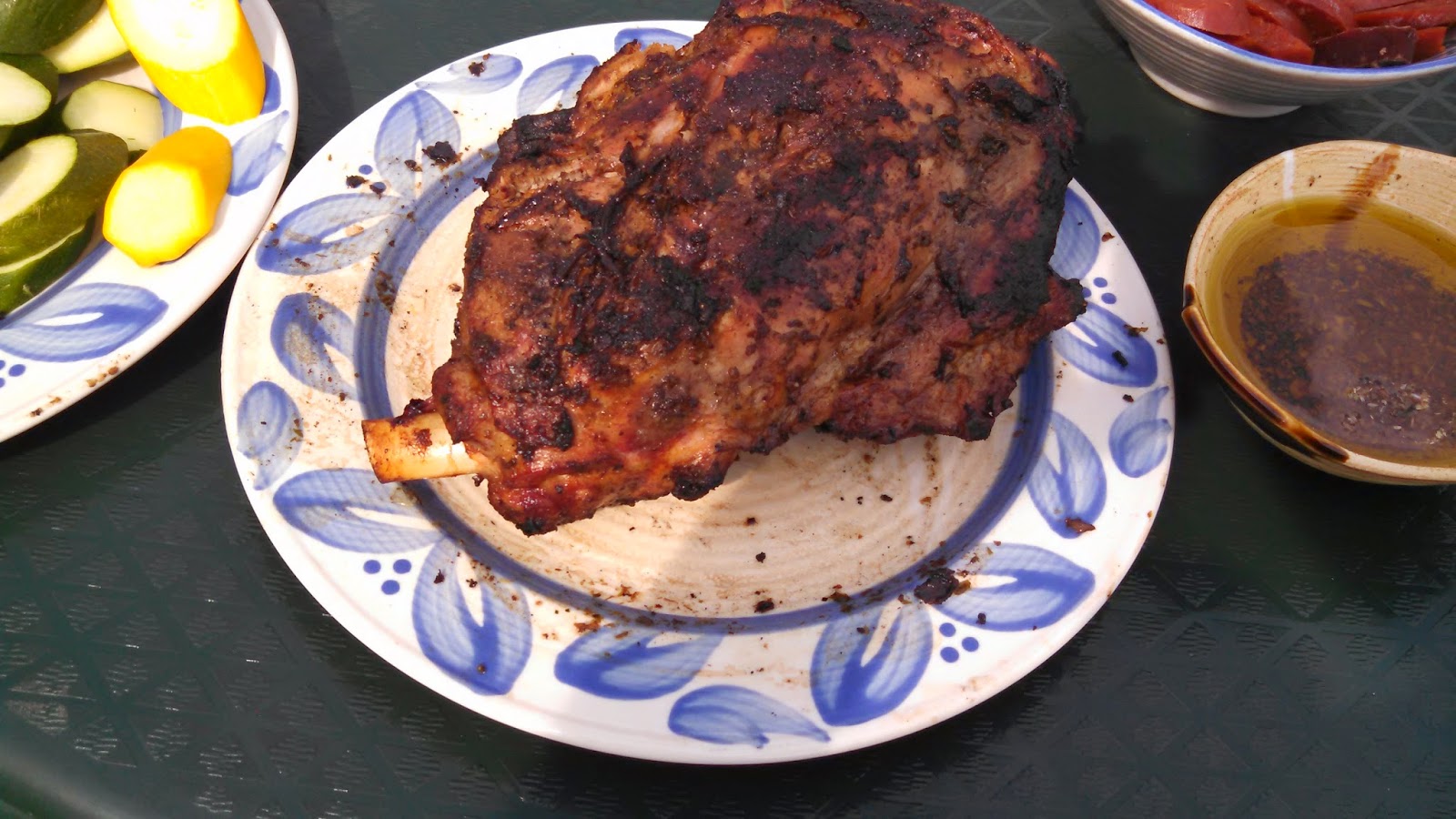It’s the waning days of summer, but we’re still grilling. One of my favorites is grilled lamb; which is a change from the usual barbecue steaks, hotdogs and burgers. But how to do it? Lamb offers so many possibilities. One of them is marinated lamb. My favorite method to grill lamb is just to prepare it highly seasoned with salt, pepper, oregano, and olive oil. However, recently I came across a recipe where the marinade consists of fresh mint and mustard. I love mint, and I love mustard. I was in heaven. As with any marinade, it’s best to marinate the lamb at least for four hours or, preferably, overnight. The rest is a snap—grill until done.
GRILLED MARINATED MINT AND MUSTARD LAMB
1 red onion, peeled and chopped
1 bunch mint leaves (reserve 1/4 cup finely chopped leaves)
2 tablespoons dry or regular mustard
1/4 cup olive oil
1 4-5 pound leg of lamb, trimmed, but with a thin layer of fat kept on (I know, it’s fat but, guess what,
that’s what gives it the flavor. get over it.)
1/2 stick butter
4 cloves garlic, peeled and finely minced
Salt and freshly ground black pepper to taste
1. Puree the onion, mint leaves and mustard in a food processor. While the processor is running, add oil in a slow and steady stream.
2. Place lamb in a large zip-lock bag and pour in the marinade. Refrigerate for at least 4 hours or, preferably, overnight, turning the bag from time to time to distribute the marinade.
3. On the day of grilling, combine the butter, garlic, chopped mint, salt and pepper in a small saucepan or skillet. Warm over low flame until the butter melts. Set aside.
3. One hour before grilling, let the lamb sit at room temperature. If using charcoal briquettes, prepare an intense fire on half of the grill. If using a gas grill, heat to high.
4. Remove lamb from the marinade and place on the hot portion of the grill. Cook until browned (6-8 minutes). Turn and cook for 5-7 minutes more.
5. Move the lamb to the cool side of the grill and brush with the butter-mint mixture. Cover the grill and cook until the internal temperature reads 125 to 130 degrees (for medium rare). This usually takes 24 to 30 minutes more, turning and basting with the butter-mint mixture occasionally.
6. When done, place on a warm serving platter and let sit for 15 minutes before serving.
Yield: 8-10 servings.






![Reblog this post [with Zemanta]](https://img.zemanta.com/reblog_e.png?x-id=93fa3c05-5af4-4e29-b311-79e8cceba9cf)